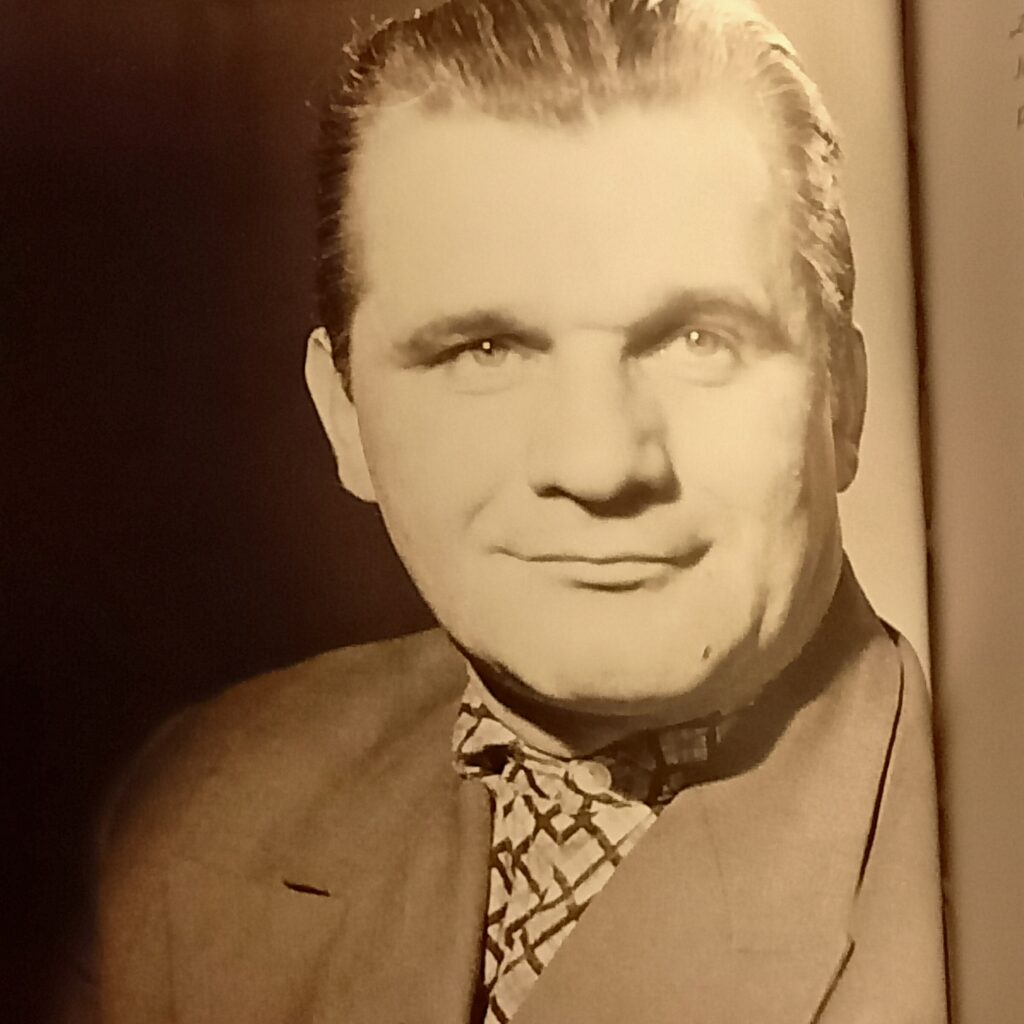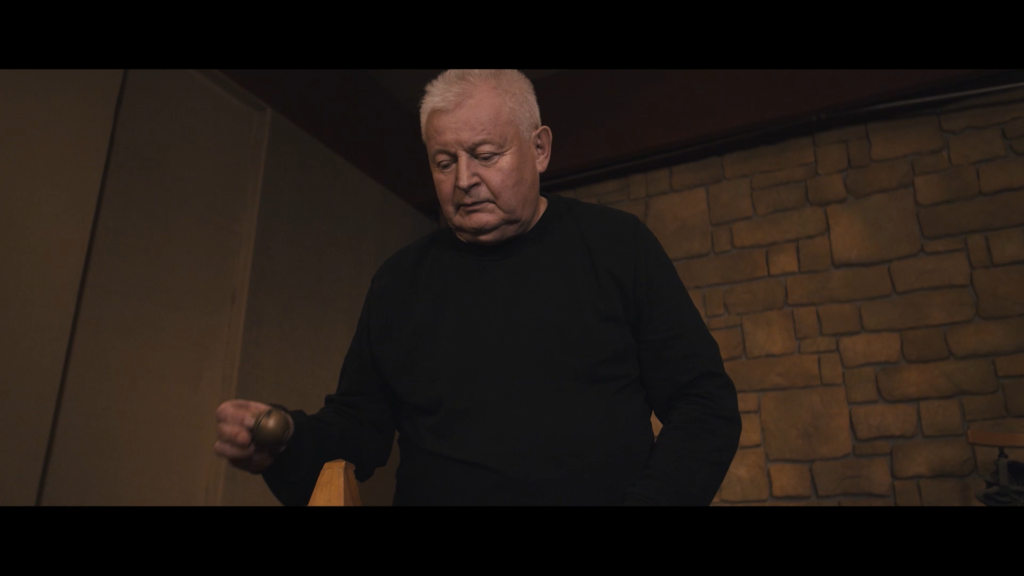“How security sounds? UNIQA sounds safe!”
When evaluating festival films promoting countries, regions, cities or companies, the jurors pay attention primarily to the originality of the work. We are more and more often surprised by excellent script or production ideas. Such a film appeared at this year’s FilmAT Festival. The insurance company UNIQA Polska, presented the picture “How security sounds? – UNIQA sounds safe”. It is an element of the company’s image campaign. The theme of this action is safety and the sounds that are associated with it. The face of the campaign is Henryk Zastróżny, a man-orchestra (sound designer); undoubtedly the best film foley-sound artist in Poland.
According to the dictionary definition: “a film is a series of consecutive images with or without sound, expressing specific contents, recorded on a medium giving the impression of movement”. It is also an artistic work that uses this technique. In common understanding, film is an art that speaks to us through a moving image, but we forget about the role of sound or we do not realize how important it is. And yet even in the era of silent cinema, in order to facilitate the reception of the film, cinemas employed tappers – pianists playing the piano or the organ, illustrating what was happening on the screen. After the premiere of “The Jazzband Singer” on October 6, 1927 – the first fictional sound film – a real revolution took place in cinematography. The sound has become a fully-fledged element of the film.

The film’s soundtrack consists of five elements:
– dialogues – texts spoken by actors or comments given by a voice-over;
– the sound of people talking in the background, if the speaker is unintelligible and the language is unrecognizable (this is known as walla). These background noises are also called ambience or atmos (“voice atmosphere”);
– music – most often aimed at building tension in individual scenes of the film;
– background (or BG) sound effects are sounds that do not explicitly synchronize with the picture, but indicate setting to the audience, such as wind, forest sounds, street noise, birds singing or the ticking of a clock;
– foley sound effects are sounds that synchronize on screen, and require the expertise of a foley artist to record properly. Footsteps, the movement of hand props (e.g., a tea cup and saucer), and the rustling of cloth are common foley units. Foley is the production of sound effects that are added to films, videos, and other media in post-production to enhance audio quality. These reproduced sounds, named after sound-effects artist Jack Foley, can be anything from the swishing of clothing and footsteps to squeaky doors and breaking glass.
The soundtrack of the film is created after editing the image. Even if we use recordings from the set, with natural effects, we still have to add what was not recorded or change it, because the sounds sound unnatural. Very often, real sounds are unacceptable, and then you have to create one that will match the film’s needs and the director’s intentions.

Henryk Zastróżny is an outstanding specialist in creating sound effects, foley sound effects. I know him perfectly well, because we started working in cinematography around the same time, in the 1970s. When I studied at the Lodz Film School, I sometimes worked in the sound studio at the Lodz Film Studio as an extra performing auxiliary work in recording the voice atmosphere or sound effects. At that time, Henryk Zastróżny worked as a technician in the projection cabin of the sound department. The head of the effects was Zygmunt Nowak. A legendary figure in the film world.
Almost every Polish film, from 1953’s “Przygoda na Mariensztacie” (“Adventure in Mariensztat”), to the 1989 documentary “Go” by Grzegorz Królikiewicz, used his services. Zygmunt worked as a sound technician at a film studio in Lodz and was responsible for one of the sound rooms .Once upon a time (during the works for film “A Generation” by Andrzej Wajda), when effects were recorded in the synchronization room, including the sound of a fire, the imitator working on the film, having theatrical experience, brought a gasoline canister to the set. With the help of a roasting pan on which he poured fuel, he wanted to start a fire, but smoking was prohibited in the sound studio.
– Dad, responsible for the sound studio, did not agree to such an imitation of the fire – remembers Zygmunt’s son, Wiesław.- The imitator stated that he could not “make” it otherwise. Dad decided he would take care of it himself. He took a piece of cellophane foil, started blowing into the microphone, and a brilliant fire came out. From then on, this “fire” was his signature number.

Zygmunt Nowak as foley artist had not only an absolute musical ear, but also excellent ideas on how to achieve the desired sound effect. I remember, when during the production of the film “Nauka latania” (“Learning to fly”) – the directorial debut of a famous cinematographer Sławomir Idziak (I worked there as a line producer), the director asked that in the scene in which the protagonist, a little boy walks through the corridor of a sanatorium for lung patients at night, you could hear the tuberculosis bacteria circulating in the air. Zygmunt Nowak thought for a long time and the next day he brought a tiny bell with very delicate sounds. Indeed, the effect was what the director wanted.
Henryk Zastróżny often helped Nowak during his work and after some time became his favorite and best assistant.
Henryk recalls these times:
– Zygmunt discovered in me some predispositions, and he – as an excellent specialist – was able to properly notice and evaluate it in a short time. Throughout the entire period of working with him, I did not hear a single word of criticism for, for example, a wrong prop or a wrong footwear shoe for steps imitation …

The work was not easy then. The recordings were made on magnetic tapes, there were no computers that would allow easy editing of the sound.
It quickly turned out that Henryk was able to create sound effects no worse than his master – Zygmunt. In the 1980s of the last century, two groups of effect producers were established at the Lodz Film Studio – one composed of Zygmunt Nowak and his sons – Zbigniew, Bogdan and Wiesław (the last one, later moved quickly to studio Se-ma-for, where he worked as a sound operator), and the other team of Zastróżny. After some time, Henryk, not wanting to create unnecessary competition, moved to the Lodz Film School. There he dealt with the soundtracking of student etudes, especially recording sound effects for them.There was an opinion among fictional directors that his effects are the best, and therefore he also often worked on fictional films. After the death of Zygmunt Nowak, and then his sons, Bogdan and Zbigniew, Henryk remained a lonely recording master. Lodz filmmakers joked that the spirit of Zygmunt must have entered Henryk’s body, because his work was equally perfect, and even his gait and gestures were similar. In addition, he was characterized by an absolute musical ear, great imagination, diligence, sense of humor and modesty.
I remember how we created the sound layer for the animated puppet film “Ichthys” (directed by Marek Skrobecki). In one of the scenes, the protagonist, who is a cross between a human and a robot, was about to scream with despair. The director wanted the voice to be on the borderline of human and inhuman. Henryk found the solution and mixed the wailing scream of the man with the squeal of the pig. There was an amazing scream that made a great impression in the film.
That’s how in the monographic book about the Lodz Film Studio “Dream Factory” by Stanisław Zawiślański and Tadeusz Wijata, Henryk Zastróżny talks about the difrence in the work in the twentieth century and today:
– The technology of that time did not help us. Today in the computer there would be no problem to add or re-edit this sound. It would only take a moment. There were no such possibilities then. In those days, you had to achieve the master level in the effects. Today, such skills are no longer needed: you can record something, edit, tweak, synchronize in and somehow it is. I have got a good school in Łąkowa street (Lodz Film Studio). To record the effects, I tighten as much as a sprinter in the starting block to do it well and quickly. There is no way that I will knock here, and there I will crack and it will be … And some people today approach the results in this way: they record something, then they change, adjust and edit it on the computer and it’s done. I have worked and I still work differently. I’m making a films with a soul.It cannot be a conglomerate of random sounds that came from a handy music library.I learned that from Zygmunt and I always tried to create a sophisticated sound. The sound effects also tell the stroies, as well as music.

In the film made for UNIQA, Henryk Zastróżny was given an amazing task: to show how security sounds like. It is worth to watch this film to see how the best Polish sound artist works and learn how security can sound.
In the spot, the protagonist faces a challenge – he wonders how safety sounds like. What sounds do we associate with peace and relief? The film is full of noises, whispers and rustles. We can also hear and see how the “backstage” of sound engineer’s work looks like. What makes the sound of snow creaking under your boots in winter, and what sounds like a parachute unfolded in the wind?
– When we were looking for an idea for a campaign, a wonderful person came to our mind – Mr. Henryk. He has an interesting professional past, and is also a very friendly, warm person – recalls Julia Kałużyńska, head of the Social Media Communication department at Bluerank, an agency cooperating with UNIQA.– Besides, with the idea related to sounds, we are in line with the very current ASMR trend on the market.
ASMR (Autonomous Sensory Meridian Response) it is a phenomenon of a pleasant tingling sensation in the neck area, caused for e.g. by appropriate sounds: whispering, rustling, humming. The phenomenon has been studied by scientists. In their opinion, ASMR is the actual activity of the brain that has a very good effect on our health.
– Caring for the safety of our customers is part of the mission of our brand and the mission of Polish UNIQA companies. We let our clients enjoy their lives by supporting them every day to live safer, longer and better lives. The new image campaign on Facebook fits in perfectly – says Katarzyna Ostrowska, director of marketing communication and PR, UNIQA Polska.
author: Zbigniew Żmudzki
translation: Wojciech Jaworek
